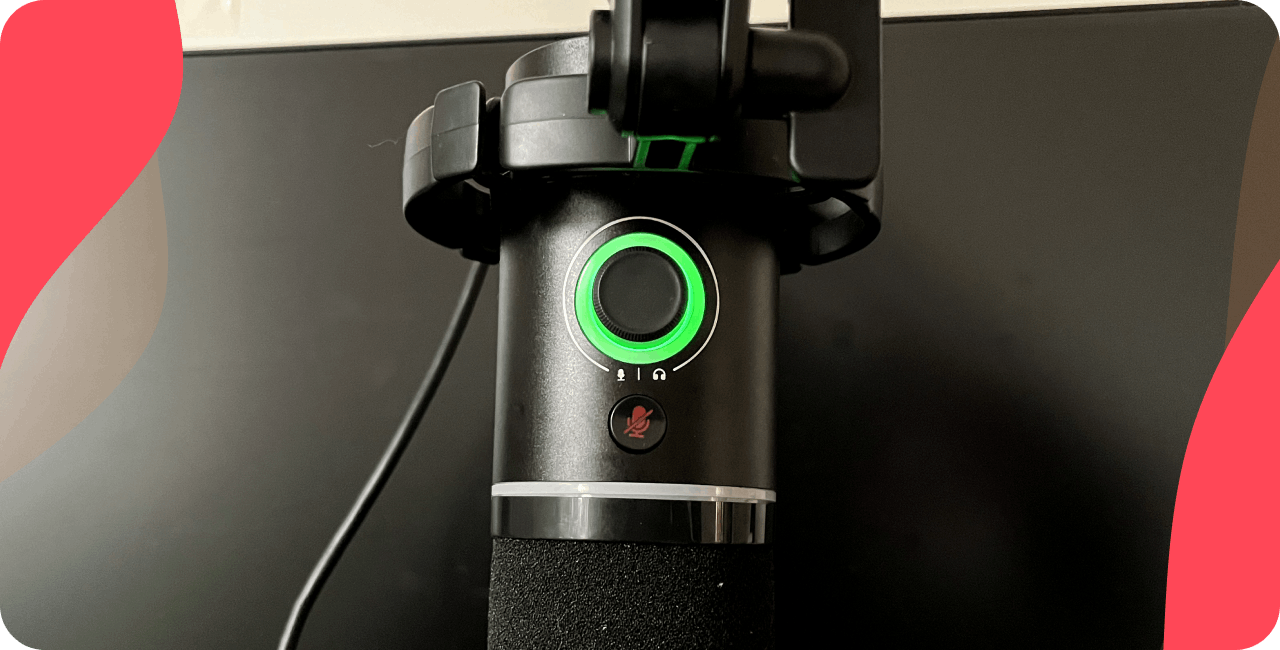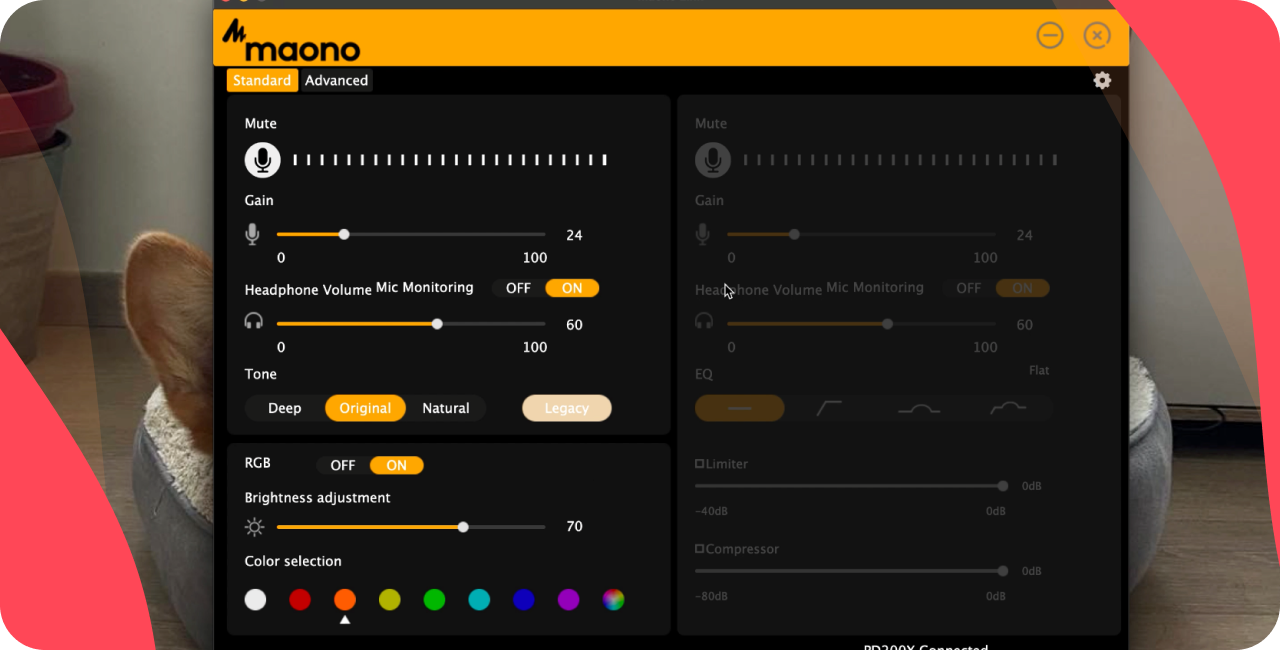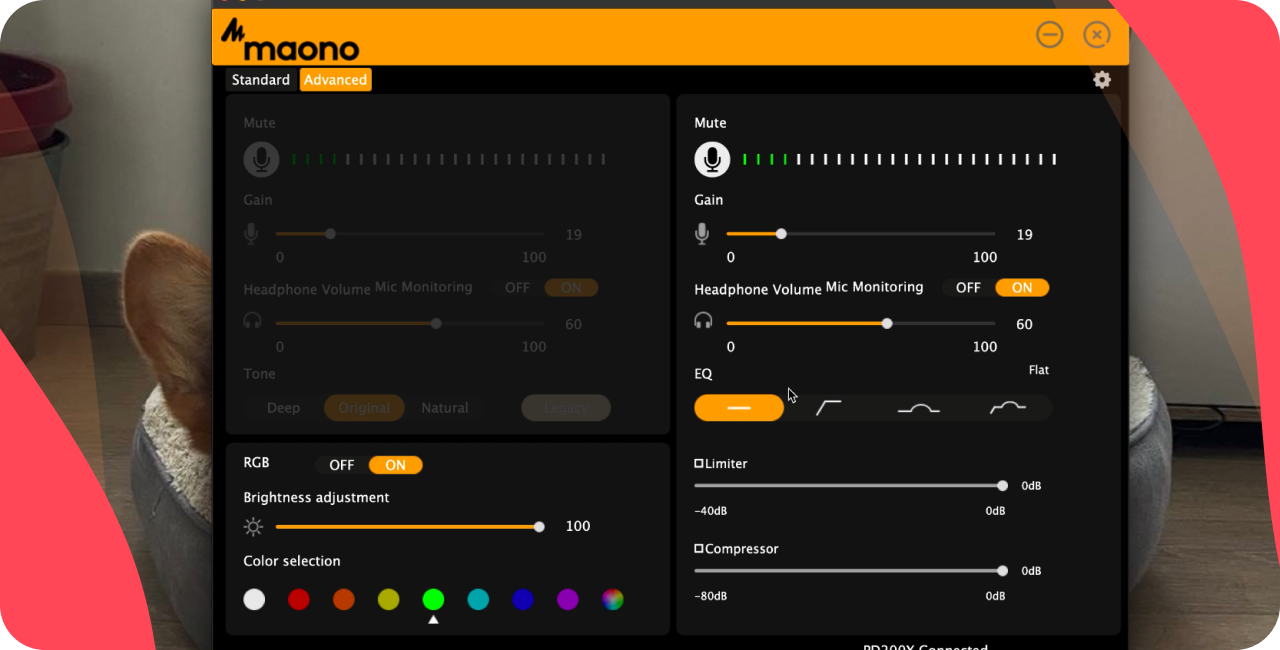This week we’re back with another product review, and this time we’re taking a look at the Maono PD200X USB/XLR dynamic microphone. We’re always excited to test new equipment, and we especially love dual-connectivity mics! Not only are they incredibly versatile, but they are also incredibly handy for taking on the go.
Unboxing the Maono PD200X
Microphone connectivity
Testing the Maono PD200X
Maono link software
Overall thoughts
Frequently asked questions
Let’s get right into this review and see if this product is worth $80.
Unboxing the Maono PD200X
When you purchase the PD200X, this is what you’ll get in the box:
- User manual
- Microphone
- Shock Mount
- 2.5m USB-C to USB-A/C Cable
- 5/8” to 3/8” Adapter
The microphone itself feels nice and solid thanks to its all-metal body. It has has a clean, modern look to it that also makes it feel pretty high-end!

Note: Bear in mind that it doesn’t come with an XLR cable or a mic stand.
Microphone connectivity
You’ll find both the XLR and USB connections on the back, along with the jack input to connect your headphones for direct monitoring (in USB mode). There’s are a RGB button that will allow you to change the colour of the light that goes around the capsule.

On the top you’ll find a mute button, as well as a dual gain and headphone volume knob. The capsule comes off very easily. It should help reduce any plosive sounds but you could also add a pop filter if you wanted to.

Testing the Maono PD200X
USB mode
In this mode, you can plug your earphones in directly into the mic for 0 latency monitoring. You’ll be able to adjust the volume level for your headphones, as well as the gain via the knob on top of the microphone. It’s interesting to note that the gain/volume knob indicates your levels thanks to a green light. The more you increase the levels, the brighter the light gets, and vice-versa.
Here’s an audio extract to give you an idea of what it sounds like:
The plug and play system means that you can start broadcasting or recording within seconds, as no additional software is required to get the equipment up and running. You also have a mute button which can be handy for radio hosts to ensure that your voice isn’t being picked up whilst a song is broadcasting for example.
Lastly, the RGB lighting is available in this mode with 8 different colours that can be changed with the press of a button. This is a nice touch if you’re planning on doing any video recordings for example!
XLR mode
In XLR mode, there’s no flashing lights, and no direct monitoring. This means that you’ll need to plug your headphones into another device (audio interface, mixing desk, etc…) in order to hear what is being picked up by the PD200X.
Here’s an audio extract to give you an idea of what it sounds like:
As you can hear, in both USB & XLR mode the audio is pretty clear, especially when you place your mouth directly in front of the capsule. The cardioid pickup pattern means that it will mostly pick up the frequencies that come straight through the top, and it will reject most of the surrounding sounds.
Maono link software
Maono have also created a software called Maono Link that you can download for free on Mac, Windows, Android & Google Play. Maono link allows you to play around and adjust all of your levels, your gain, monitoring, tone, and even the light settings on your device.

There’s also an advanced side if you want to go a bit further. So you have the same basic settings at the top, but then as you move down you can see EQ settings:
- Flat: original sound
- High-pass filter: cancels out the lows in your voice
- Presence boost: makes the overall presence of your voice more impactful
- High pass filter & presence boost: cancelled out lows, plus the presence boost
There’s also a limiter which is incredibly useful to avoid clipping if your audio levels are going from average, to really high. And finally, you can also compress your sound directly via the software too.

We are a huge fan of this simple and intuitive software! It can really help boost the quality of your content without having to use a super complicated tool. You can use it during your live broadcasts, or even whilst recording to avoid having to do any editing in post-production.
Note: the software is only compatible with the PD200X in USB mode.
Overall thoughts on the Maono PD200X
Overall, for a mic at this price point we were really pleasantly surprised! Let’s go over the pros and cons of the PD200X:
Pros:
- Audio quality: incredibly clear for $80
- Build: it feels very solid thanks to the metal body
- Dual connectivity: this is obviously a huge plus, as it can adapt to various different needs and situations
- Maono link software: a huge bonus that allows you to easily enhance your audio quality for free
- USB cable adapter: allows you to plug it into USB-A to USB-C or USB-C to USB-C
Cons:
- Shock mount: although the microphone itself is made out of metal, the shock mount appears to be plastic
- Gain/volume knob: your levels are shown via the brightness of a light, and not with a “start & stop” indication
- XLR cable: this is not included, meaning that if you don’t own one you cannot test the dual connectivity straight away
Regardless of the few cons, this microphone is a great option for radio broadcasting and podcasting. It’s got a great design, the audio quality is impressive, and you have the freedom of choosing the connectivity that best suits your needs.
Frequently asked questions
How much does the Maono PD200X cost?
The PD200X is available for $80.
What is the frequency response of this microphone?
It has a relatively wide frequency response of 40Hz-16KHz.
What type of pick up pattern does it have?
This model has a cardioid pick up pattern. This means that it’s built to reject any background noise.
Does it come in different colors?
The PD200X is available in black or white.
We want to thank Maono for sending us this equipment to test. You can check out the PD200X here!
